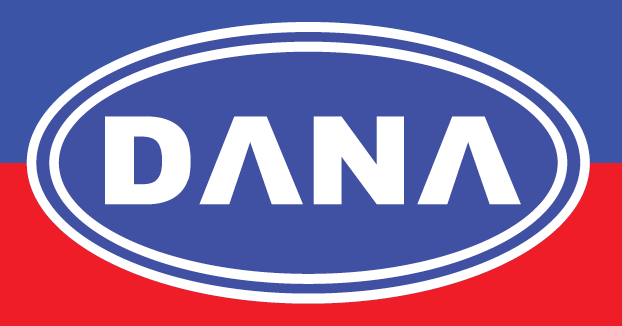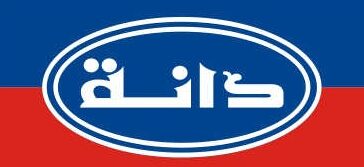Temporary fencing construction site
Temporary fencing plays a crucial role in ensuring the safety, security, and organization of construction sites. Construction projects are often dynamic environments with numerous hazards and potential risks. Temporary fencing provides a reliable and flexible solution to mitigate these risks, controlling access, preventing unauthorized entry, and protecting both workers and the general public. This article explores the importance and benefits of temporary fencing on construction sites, different types of fencing available, guidelines for installation, safety regulations and considerations, maintenance, and inspection practices, as well as the cost analysis associated with implementing temporary fencing on construction sites. Understanding the significance of temporary fencing in construction settings is essential for project managers, contractors, and other stakeholders involved in the construction industry.

Introduction to Temporary Fencing on Construction Sites
Importance of Temporary Fencing
Temporary fencing on construction sites is like the MVP of safety and security. It is the shield that keeps unwanted visitors out and protects the valuable equipment and materials within. Trust me, you do not want just any Tom, Dick, or Harry strolling in and making off with your shiny new tools or cement mixer.
Purpose of Temporary Fencing on Construction Sites
The main purpose of temporary fencing on construction sites is to create a safe and controlled environment. Think of it as drawing a line in the sand, except the line is made of durable fencing material, not sand. It helps to prevent accidents, deter theft and vandalism, and ensure compliance with regulations. Plus, it can also keep nosy neighbours from peering into your construction site like they’re watching a season finale of their favourite show.
Scope of the Article
In this article, we’ll dive headfirst into the world of temporary fencing on construction sites. We’ll explore why it’s so darn important, the benefits it brings to the table (or the construction site, in this case), the different types of temporary fencing available, and some handy guidelines for installation. So get your hard hat on and let’s get started.
Importance and Benefits of Temporary Fencing for Construction Sites
Enhanced Security and Access Control
Temporary fencing is like the bouncer standing at the door of a fancy club, except it works 24/7. It keeps unauthorized individuals out and ensures that only the people with the proper credentials can strut their stuff inside the construction site. This not only protects your equipment and materials but also reduces the risk of accidents caused by untrained individuals wandering around like lost puppies.
Safety and Accident Prevention
Construction sites can be a dangerous playground if not properly managed. Temporary fencing acts as a barrier that keeps curious souls away from potential hazards. It helps to set clear boundaries and keeps everyone in their designated areas. It’s like the imaginary line you drew in the sand as a kid to keep your sibling out of your castle, except this time, it has legal consequences if someone crosses it.
Theft and Vandalism Prevention
Nobody likes having their stuff stolen or vandalized. Temporary fencing acts as a wall of defense against potential thieves and troublemakers who have an eye for shiny construction toys. It’s like that extra lock you put on your bike to deter would-be thieves, except this time, it’s a pretty sturdy fence that’s harder to cut through than your average bike lock.
Compliance with Regulations and Legal Requirements
Temporary fencing is not just a fancy accessory; it’s also a legal requirement on many construction sites. It helps you stay on the right side of the law and ensures that you don’t get on the wrong side of hefty fines or legal headaches. Plus, it shows that you’re a responsible and law-abiding citizen, which can earn you some extra brownie points with the powers that be.
Types of Temporary Fencing for Construction Sites
Chain Link Fencing
Chain link fencing is like the classic denim jeans of temporary fencing. It’s durable, versatile, and can withstand a fair amount of wear and tear. Plus, it lets you see what’s happening on the other side, so you can keep an eye on your construction site without resorting to superpowers or installing a bunch of surveillance cameras.
Mesh Fencing
Mesh fencing is like the breathable fabric of temporary fencing options. It offers a bit more privacy than chain link fencing while still maintaining good visibility. It’s great for keeping prying eyes out and providing a sense of security without feeling like you’re trapped in a fortress.
Panel Fencing
Panel fencing is like the LEGO of temporary fencing options. It’s easy to assemble and disassemble, making it a flexible choice for construction sites that need to adapt quickly. So, if you’re looking for a temporary fencing option that’s as simple as snapping blocks together, panel fencing has got your back.
Barriers and Barricades
Barriers and barricades are like the bodyguards of temporary fencing. They’re used to create additional layers of protection and guide traffic within the construction site. They’re handy when you need to control access to certain areas or prevent unauthorized vehicles from entering. Just remember, they won’t shout “Halt!” and tackle intruders, but they’ll certainly make it harder for them to get through.
Guidelines for Installing Temporary Fencing on Construction Sites

Assessing the Site and Planning
Before you start throwing fences around willy-nilly, take a moment to assess the site and plan your fencing strategy. Identify the areas that need to be secured, consider any specific regulations or requirements, and figure out the best layout for your temporary fencing. It’s like putting together a puzzle, except you’re using fencing panels instead of cardboard pieces.
Temporary Fencing Placement
Now that you have a plan, it’s time to get your hands dirty and start placing the temporary fencing. Make sure you follow the layout you’ve designed and ensure that the fencing is installed securely. Nobody wants a gust of wind or a stray dog knocking down your fortification, so be thorough and double-check everything.
Securing and Anchoring the Fencing
Lastly, but certainly not lastly (yes, I made that word up), you need to secure and anchor the fencing. This step ensures that your temporary fencing doesn’t decide to take a walk on its own or go flying like a kite in the wind. Use sturdy anchors and fasteners to keep the fencing in place, and don’t forget to give it a little love and attention every now and then to make sure it’s holding up well.
And there you have it, a crash course on temporary fencing for construction sites. Now you can go forth and protect your construction site like a fencing master. May your fences be sturdy, your boundaries respected, and your construction zone as safe as a fluffy kitten napping in a sunbeam.5. Safety Regulations and Considerations for Temporary Fencing on Construction Sites
Construction sites can be dangerous places, with heavy machinery and various hazards present. That’s why it’s crucial to have proper safety regulations and considerations in place when it comes to temporary fencing.
Height and Visibility Requirements
Temporary fencing on construction sites should meet specific height requirements to prevent unauthorized access. Typically, a minimum height of 6 feet is recommended to deter intruders and keep the site secure. Additionally, the fencing should be highly visible, utilizing bright colors or reflective materials to enhance visibility, especially during nighttime hours.
Signage and Warning Systems
Alongside temporary fencing, clear signage and warning systems should be installed to alert individuals of potential dangers. These signs can include messages such as “Construction Area – Authorized Personnel Only” or “Caution: Heavy Machinery at Work.” By strategically placing these signs around the construction site, you help minimize the risk of accidents or unauthorized entry.
Emergency Access and Egress
Even with temporary fencing, it’s essential to ensure that emergency access and egress points are clearly marked and easily accessible. In case of emergencies, such as fires or medical situations, there must be unobstructed pathways for emergency responders to reach the affected area. Proper planning and communication with relevant personnel will ensure that emergency access remains unimpeded.
Maintenance and Inspection of Temporary Fencing on Construction Sites
Temporary fencing on construction sites requires regular maintenance and inspections to ensure its effectiveness. Here are some key considerations:
Regular Cleaning and Repairs
Construction sites can be messy, and temporary fencing is no exception. Regular cleaning of the fencing will help maintain its appearance and prevent any debris from obstructing visibility. Additionally, any damage or wear and tear should be promptly repaired to maintain the integrity of the fencing.
Inspecting for Damage and Weaknesses
Regular inspections of the temporary fencing are crucial to identify any damage or weaknesses that may compromise its effectiveness. Inspect the fencing for signs of rust, loose components, or bent sections that may require immediate attention. By addressing these issues promptly, you can ensure the fencing remains robust and secure.
Replacing and Upgrading Temporary Fencing
As construction projects progress and the site’s requirements change, there might be a need to replace or upgrade the temporary fencing. For instance, if the existing fencing no longer meets safety regulations or no longer adequately secures the site, it’s important to adapt accordingly. Regular assessment of the fencing’s suitability for the project will help determine if replacements or upgrades are necessary.
Cost Analysis of Temporary Fencing for Construction Sites
When it comes to temporary fencing, cost is an important consideration. Here are some factors that can affect the overall cost:
Factors Affecting Temporary Fencing Costs
The total cost of temporary fencing for construction sites can vary based on factors such as the size of the site, the duration of the project, and the type of fencing required. Additionally, any additional safety features, such as warning signs or reflective materials, can increase the overall cost. It’s important to consider these factors when budgeting for temporary fencing to ensure that it meets both safety requirements and project affordability.
Now that you have a better understanding of the safety regulations, maintenance considerations, and cost analysis associated with temporary fencing on construction sites, you can confidently select and implement the best solution for your project. Remember, the safety of workers and the security of the site should always be a top priority. In conclusion, temporary fencing is an indispensable asset for construction sites, offering a range of benefits including enhanced security, safety, and compliance with regulations. By choosing the appropriate type of fencing, following installation guidelines, adhering to safety regulations, and conducting regular maintenance and inspections, construction site managers can ensure the effectiveness and longevity of their temporary fencing systems. While there may be costs associated with implementing temporary fencing, the investment is well worth it when considering the protection it provides to workers, property, and the overall success of construction projects. By prioritizing temporary fencing, construction sites can create a safer and more controlled environment, ultimately leading to improved project outcomes.
About Us
DANA Steel (www.danasteel.com) is an ISO 9001:2015 certified company, with the rich experience of around three decades, we have always thrived hard in order to bring revolutionary changes to the steel industry; We have our state of the art Cold Rolling Mill (CRM Complex) Situated in DIC (Dubai Industrial City) we proudly manufacture our products in Dubai, UAE.
Our market extends over a wide demographic as we export over products to around 50 countries including counties from the Indian subcontinent (Bangladesh, India, Nepal); South-East Asian countries (Indonesia, Thailand, Vietnam); Middle-East countries including members of GCC (GCC-Saudi Arabia, Bahrain, Kuwait, Jordan and Oman (Ibri, Salalah, Muscat, Sohar, Nizwa, Barka). We also have our markets extended to Africa (Djibouti) and South America. With our constant commitment to customer contentment, we are able to provide competitive prices and faster shipment to all of our valuable clients.
Feel free to contact in case of any enquiry. Listed below are the mediums through which you can reach us out!
WhatsApp – +971507983153
Tel – 0097142217273
Email – info@danagroups.com / info@danasteel.com



